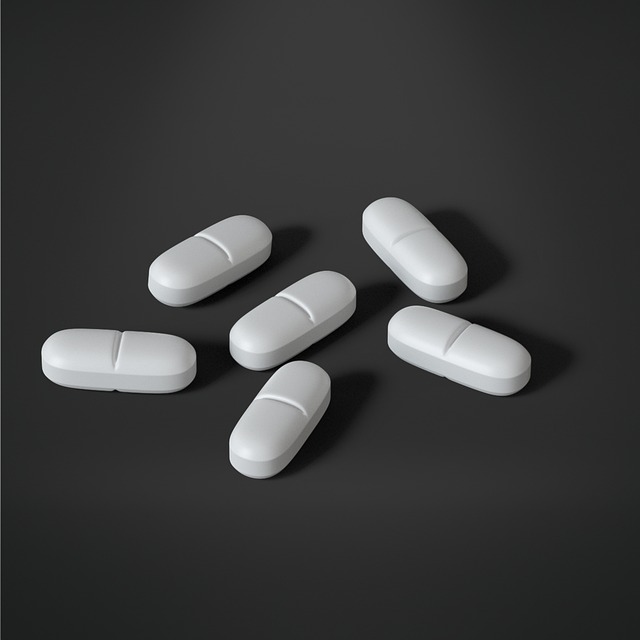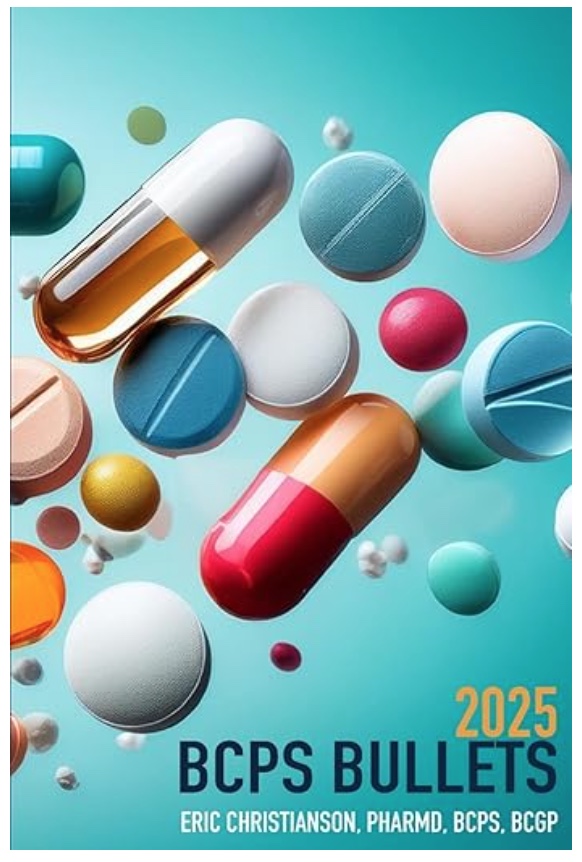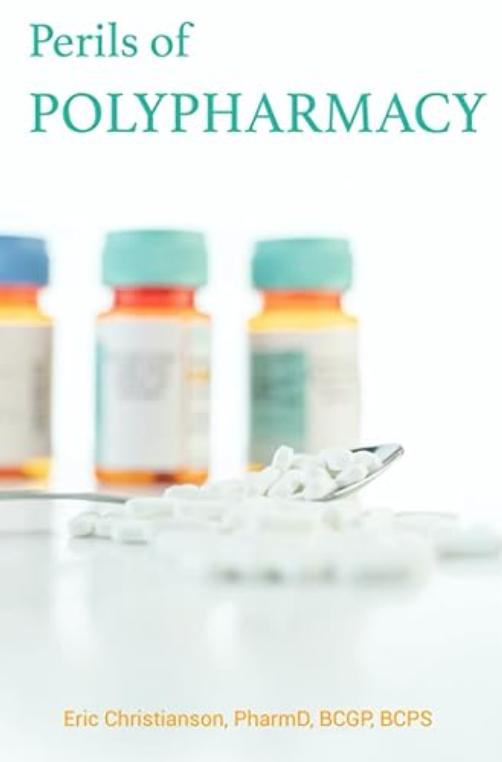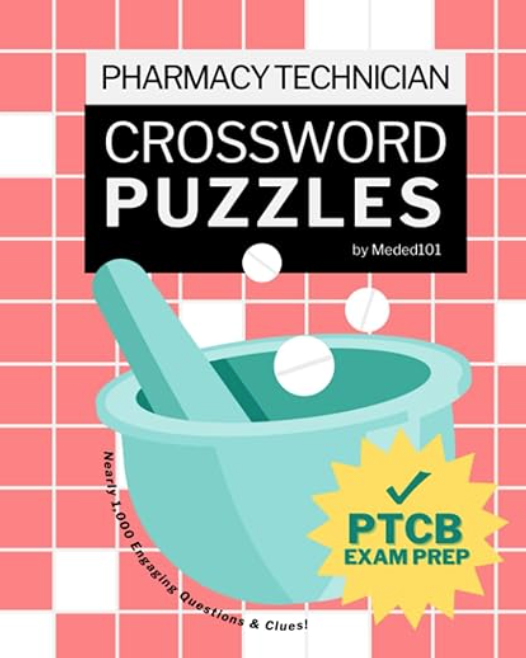Bactrim (sulfamethoxazole/trimethoprim) is a commonly used antibiotic associated with many adverse events that include neutropenia, thrombocytopenia, rash, hepatitis, and electrolyte abnormalities. Bactrim also has the potential to elevate serum creatinine but it may not be indicative of worsening renal function (great board exam question!). Heightened serum creatinine resulting in a creatinine clearance reduction, along with electrolyte abnormalities, can be challenging to navigate in specific populations like CKD patients. The objective of this post was to review Bactrim and creatinine elevations including how much it elevates on average, how quickly this elevation occurs, how long it lasts, whether this effect is dose-dependent, and what the clinical implications are surrounding its use.
Bactrim has the potential to elevate serum creatinine levels, and this is mostly attributed to the trimethoprim component of the combination therapy. With typical dosing of Bactrim, the trimethoprim component inhibits tubular secretion of creatinine, leading to a rapid but reversible increase in serum creatinine levels.6 This effect is not believed to alter the glomerular filtration rate, due to its lack of effect on cystatin C, but the increase in serum creatinine level causes a decrease in calculated creatinine clearance.2 Cystatin C is a low-molecular-weight basic protein that is produced at a constant rate by all nucleated cells. It is freely filtered by the kidney and is not secreted.2
This decrease in creatinine clearance value can prove to be very alarming for many healthcare professionals, especially when dealing with patients who already had underlying kidney issues prior to antibiotic initiation. This has resulted in the importance of obtaining both baseline serum creatinine level and cystatin C levels, in order to observe trends in both the CrCl and eGFR calculations. By doing so, health care professionals would be able to determine if the transient elevations of creatinine levels resulting in a decrease of CrCl is a pseudo-elevated or an actual indication of nephrotoxicity. This delineation is important due to the lack of effect on Cystatin C by Bactrim leading to a more accurate kidney status picture through eGFR value, and not creatinine clearance.
How Much Will Creatinine Rise on Bactrim?
Elevations in creatinine due to Bactrim can range from 13-35%+. Patients with worse renal function (i.e. CKD) appear to be more affected. Bactrim and the observed elevations due to the perceived mechanism, is also not as black and white. These numbers typically range from study to study based on confounding variables both internally and externally within the protocol, and a huge common indicator of elevation intensity within many of the studies is believed to be baseline kidney function prior to antibiotic intervention with Bactrim. In studies that focused on the effect of trimethoprim on serum creatinine levels in healthy individuals, they found that on average the increase ranged from 15-35% increase.2 In other studies with healthy subjects, the increase in serum creatinine ranged between 13% and 23%. Some of these same studies which also included patients with CKD, found the increase in serum creatinine concentration to be more pronounced than observations in healthy subjects and has been described to be higher than 35%.3 In Myre et al study, observations reported serum creatinine reversibly increased by 14.8% in the healthy subjects as compared to 34.6% in the CKD patients. In a different study, the serum creatinine level rose from baseline by 17.6–31.3% with approximately a 20% decrease in creatinine clearance, but the glomerular filtration rate (GFR) did not decrease due to pseudo-elevation in serum creatinine.6 Again, this shows the benefit of obtaining both a baseline serum creatinine and cystatin C level in order to observe if any effect on GFR occurs during therapy. This may be the more accurate visual of kidney function status when dealing with Bactrim pharmacotherapy.
How Quickly Will Creatinine Rise?
This leads to the next objective, how long does it take Bactrim to cause these elevations, and how long will this effect typically last? It appears that the effect happens quickly (within hours) and is reversible once the drug is discontinued. One study, Berglund et al, showed that the effect of Trimethoprim on creatinine began as early as two hours after intake and reached a maximal peak within four to six hours.3 This same study also suggested that this effect could last at least 24 hours after discontinuation of the therapy, but it did not study the duration of inhibition induced by Trimethoprim directly, so this was more conjecture based upon previous studies. In a different study, they found that individuals with normal renal function exhibited Trimethoprim and Sulfamethoxazole half-life effect of 11 and 9 hours, respectively, but increased with renal dysfunction.3 They suggested that in CKD patients, the drug half-life may be doubled or even tripled. In all studies analyzed, the serum creatinine reverted to baseline after cessation of therapy, and this time took a maximum of 5 days.3 So in terms of every study considered, the rough estimate of how long it takes for Bactrim to raise creatinine levels is 2 hours, with the maximum effect being achieved around 4-6 hours. In terms of how long this effect lasts beyond discontinuation, it’s safe to say that this range is much more ambiguous and larger in range, being somewhere between 24 hours and 5 days, mainly dependent again on baseline kidney function.
Is Bactrim’s Effect On Creatinine Dose-Dependent?
For many drugs, especially antibiotics, the therapeutic effect, and the effects of adverse events and/or toxicity are dependent upon one of two things: time or concentration. Most evidence appears to indicate that the effects on creatinine are dose-dependent.
One study, Naderer et al, compared the differential effect of two different dosages of trimethoprim on serum creatinine in 20 healthy subjects. With the classical antibacterial dosage (10 mg/kg/day), serum creatinine increased by 26% (0.2 ± 0.13 mg/dl) as compared to 31% (0.28 ± 0.18 mg/dl) with the higher dosage recommended for P. jirovecii infections (20 mg/kg/day).3 These observed variations are likely due to differing dosages but are not definitively proven due to the data not reaching statistical significance.
In another study at the University of Michigan in 2002, they suggested that Bactrim appeared to exhibit concentration-dependent antibacterial activity against the targeted organisms of the study. But along the same token, another study observed that Bactrim possessed bacteriostatic activity which is time-dependent, with the potential for concentration-dependent bactericidal activity for specific organisms, possibly in selected infected sites within the body.1 This study also determined that Bactrim’s toxicities and adverse effects were concentration-dependent, which necessitates avoidance of excessive dosage. A study found that in addition to the increased risk of AKI, patients with renal impairment are more likely to experience electrolyte abnormalities while taking sulfamethoxazole/trimethoprim, particularly hyperkalemia, and hyponatremia.5 These electrolyte abnormalities are reported to be more common with high doses of sulfamethoxazole/trimethoprim in non-renally impaired patients indicating these effects are dose (or concentration) dependent.5 This study’s findings corroborate the last study’s findings that adverse effects are concentration-dependent, necessitating excessive dosage avoidance, and affirms the importance of taking extra precautions with patients that have lower baseline kidney function.
Bactrim and Creatinine Elevations – Clinical Practice Implications
Lastly, how does all of this information affect clinical judgment? Are the observed findings in each of these studies something that we should worry about?
It appears that small, modest increases (less than 30-35%) in creatinine are likely not of great concern when using a short-term medication containing trimethoprim. Longer-term use and higher dosages of Bactrim should be monitored a little more closely. The elevation in creatinine may be more pronounced in patients with already poor renal function which can muddy the clinical picture. You may need to take a little extra caution in that patient population. Cystatin C is a potential alternative to monitor if there is a question of whether renal function is actually declining or trimethoprim is causing a pseudo-elevation in creatinine.
- 30 medication mistakes PDF
- 18+ Page Drug Interaction PDF
- 10 Commandments of Polypharmacy Webinar based on my experiences in clinical practice
Special thanks to Dean Dubay, PharmD Candidate for writing this article in collaboration with Eric Christianson, PharmD, BCPS, BCGP
Popular Amazon Books
References:
- Brown G. R. (2014). Cotrimoxazole – optimal dosing in the critically ill. Annals of intensive care, 4, 13. https://doi.org/10.1186/2110-5820-4-13
- Kawato, R., Rokutanda, R., Okada, M., Matsushita, M., Yamaji, K., & Tamura, N. (2022). Effect of Prophylactic Dose of Trimethoprim-Sulfamethoxazole on Serum Creatinine in Japanese Patients with Connective Tissue Diseases. Clinical medicine insights. Arthritis and musculoskeletal disorders, 15, 11795441221085141. https://doi.org/10.1177/11795441221085141
- Pierre Delanaye, Christophe Mariat, Etienne Cavalier, Nicolas Maillard, Jean-Marie Krzesinski, Christine A. White; Trimethoprim, Creatinine and Creatinine-Based Equations. Nephron Clinical Practice 1 October 2011; 119 (3): c187–c194. https://doi.org/10.1159/000328911
- Reed M. D. (2000). Optimal antibiotic dosing. The pharmacokinetic-pharmacodynamic interface. Postgraduate medicine, 108(7 Suppl Contemporaty), 17–24. https://doi.org/10.3810/pgm.12.2000.suppl10.52
- Roy, Z. V. (2024, June 27). Why should sulfamethoxazole/trimethoprim (bactrim) be used with caution in patients with renal impairment or those on dialysis?. Division of Infectious Diseases. https://blog.unmc.edu/infectious-disease/2024/06/28/pharmtoexamtable-part-2-why-should-sulfamethoxazole-trimethoprim-bactrim-be-used-with-caution-in-patients-with-renal-impairment-or-those-on-dialysis/
- Toshiharu Urakami, Yohei Hamada, Yusuke Oka, Mikinori Kannae, Tomohide Okinaka, Ayaka Sanada, Chisato Shimanoe, Yosuke Aoki. (2021) Is trimethoprim/sulfamethoxazole-associated increase in serum creatinine a pseudo-elevation or true nephrotoxicity? Journal of Infection and Chemotherapy, Volume 27, Issue 8, https://doi.org/10.1016/j.jiac.2021.03.015









0 Comments